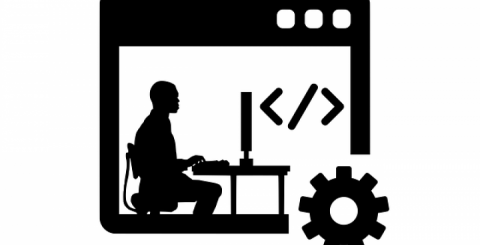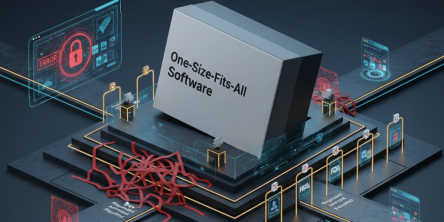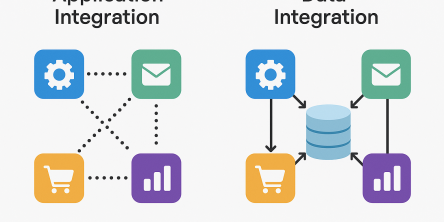Types of Software Testing You Should Know

Moving towards a more digitally connected world, the software development space is being influenced in several ways. With every industry turning ‘smart’, more emphasis is being laid upon optimizing processes, enhancing business operations, and ultimately delivering better customer experiences. Since businesses have a lot more to focus on, errors are bound to happen. Let’s face it, we all make mistakes. And especially in a fast-paced and agile environment where quicker releases are a focus area, mistakes will happen? But how do you identify and rectify them? The answer is through software testing.
In this article, we will take you through the different types of software testing that meet various needs.
- Unit Testing: Test every bit of your software is called unit testing. Performing this test requires a thorough understanding of programming. That’s why programmers perform this test and not testers. Every unit of code is tested rigorously.
- Integration Testing: Once the modules are integrated, you must check if the combined modules work properly. This step is known as integration testing.
- End to End Testing: End-to-end testing is when functional testing of the entire software system is done. It requires a much lesser end-to-end test as compared with integration tests.
- User Interface Testing: As the name suggests, it involves the testing of the application’s user interface. This test helps with cross-checking if the user interface meets the specific requirements of the project. This test is critical since you want the app to deliver an immersive and user-friendly experience.
- Accessibility Testing: Accessible testing helps in ensuring that even people who are disabled have access to your software. For the same, you need to take into account various disabilities like deafness, blindness & color blindness.
- Alpha Testing: Alpha testing is where all issues and errors are identified. This test takes place at the last stage of app development. Before the application is delivered to the client or launched, the team ensures that the software is error-free. Alpha testing takes place before Beta testing. Here, a virtual environment is created as opposed to an actual environment.
- Beta Testing: This test is run before the product launches. Carried out in a real environment, it involves a lesser number of actual users to ensure that it runs smoothly and is error-free. With the required feedback and suggestions, changes can accordingly be made to make the software perform better.
- Adhoc Testing: As the name suggests, this type of test takes place on an ad-hoc basis without plans, documentation, systems, or test cases. As opposed to other tests, this test does not systematically take place.
- Compatibility Test: Compatibility testing is where the software is tested on the grounds of where it is compatible with other operating systems, network environments, web browsers, hardware, and more. Thus, it checks whether software application functions with various configurations.
- Backward Compatibility Testing: This test is carried out to check if an updated version of the app or a completely new app functions properly with previously created environments. Certain applications are developed to meet the standards of a modern environment. In such cases, backward compatibility testing is necessary.
- Performance Testing: As the name suggests if it helps check the software performance. With the help of performance testing tools, you can get identify the performance of your app and the issues that crop up.
- Load Testing: Helps you identify how much load a system can take before the software performance deteriorates.
- Recovery Testing: It is conducted to check how well an application recovers from a crash. Crashes can take place at any time. A tester’s job is to check how well a software revives and starts performing regularly.
- Regression Testing: There may be times when you need to make changes in a component, function, or module. However, once the changes are made, you must check if the software functions properly. This process is called regression testing.
- Agile Testing: This test is conducted by the QA team and is carried out from the actual user’s standpoint.
- API Testing: Like unit testing, this is also a code-level test. The only difference between unit testing and API testing is that unit testing is carried out by the entire development team, while API testing is handed solely by the QA team.
- Black Box Testing: This is another test that is carried out by the QA team. This test is simply conducted to check the functionality of the application. It does not require the team to have any prior technical knowledge.
- White Box Testing: This type of test requires sound knowledge of an application’s code. It also requires a thorough understanding of the app’s internal logic.
- Security Testing: Security tests help to ensure that your application is safe & secure to keep breaches at bay. This is an important test where the team checks how exposed your app is to security issues and attacks. They then work towards strengthening your app.
- Usability Testing: Testing how user-friendly your app turns out is known as usability testing. A good way to test if people enjoy using the app is to get a few people to use it for a couple of days and find out if they have explored the app as much as you would want them to without giving out any information.
Summing Up
We hope this article gives you some insight into the various types of testing required to make your app a huge success. Although we have listed down all these types of tests, it does not necessarily mean that your application will need to go through each one of the tests. It will depend more on your requirements as well as the needs of the app. However, some tests are critical to be conducted to ensure that your app provides an immersive experience to users and is also not affected by ongoing online threats. These tests must be conducted by an experienced QA team of software QA and testing services companies.
Similar Articles
Discover the best tools to enhance employee recognition, boost morale, and create a more motivated, engaged workplace culture.
At first glance, off-the-shelf software appears to be a dream come true. They are quick to set up, cheaper upfront, and marketed as “universal.”
A modern business must continually adapt. This bit everyone seems to know.
The modern healthcare industry is undergoing a significant transformation. The models of healthcare that we are used to thus far are now making way for a more data driven approach
In the modern world, maintaining good health often feels like a constant challenge. Between busy lifestyles, sedentary habits, and lack of motivation, many people find it difficult to stay consistent with exercise, diet, or wellness practices.
Every news publisher's dream, or just getting started, hits that wall sooner or later. What do you build your site on? You’ve basically got two roads: WordPress or custom development.
Discover key features construction teams need in permit tracking software to boost efficiency, stay compliant, and streamline project management.
Thanks to cloud computing, specialized SaaS apps have become rather accessible.
Let’s be honest – managing royalties isn’t exactly the fun part of working in media or publishing, but it is very important because it protects the creator’s rights and work ownership.








